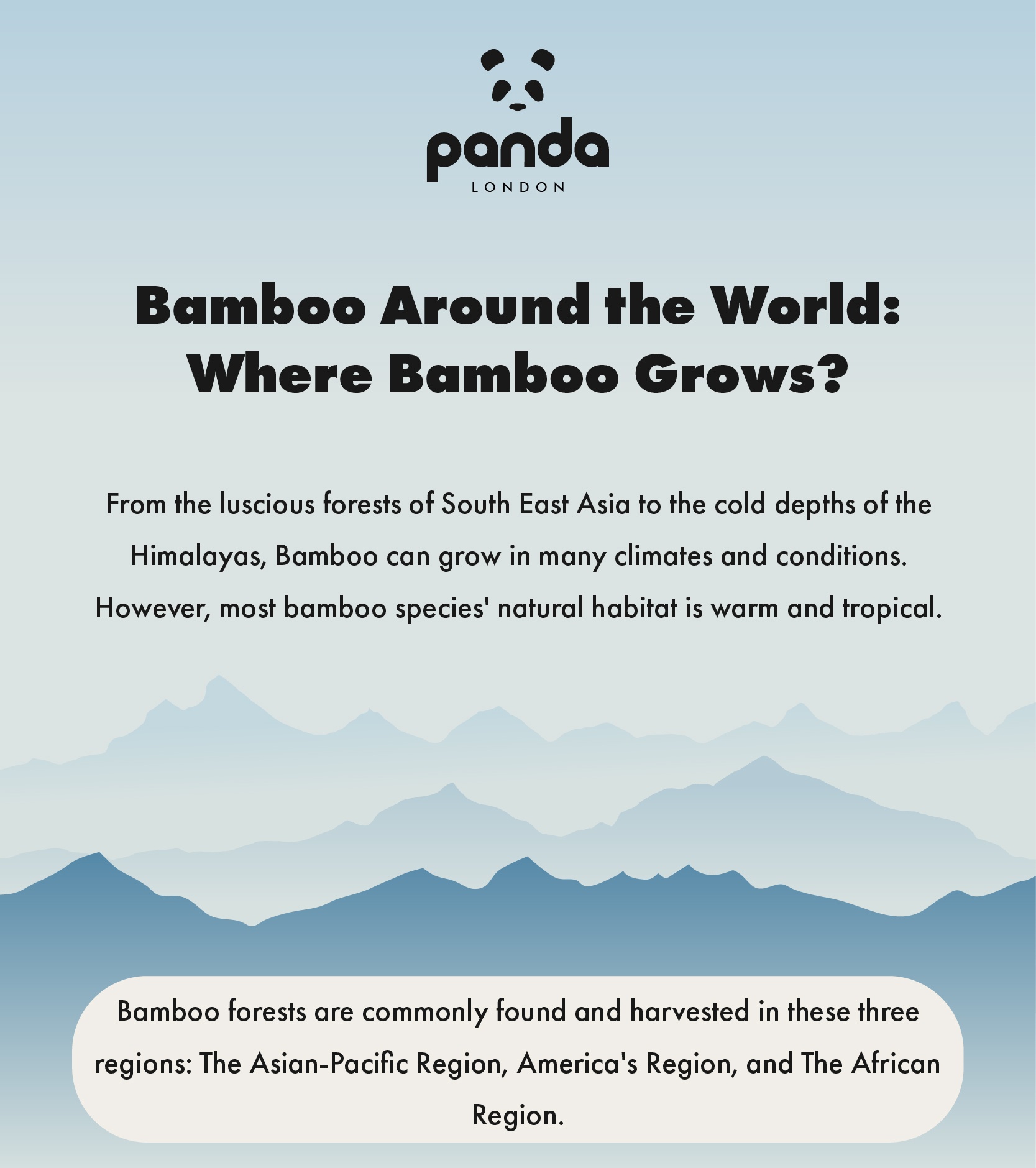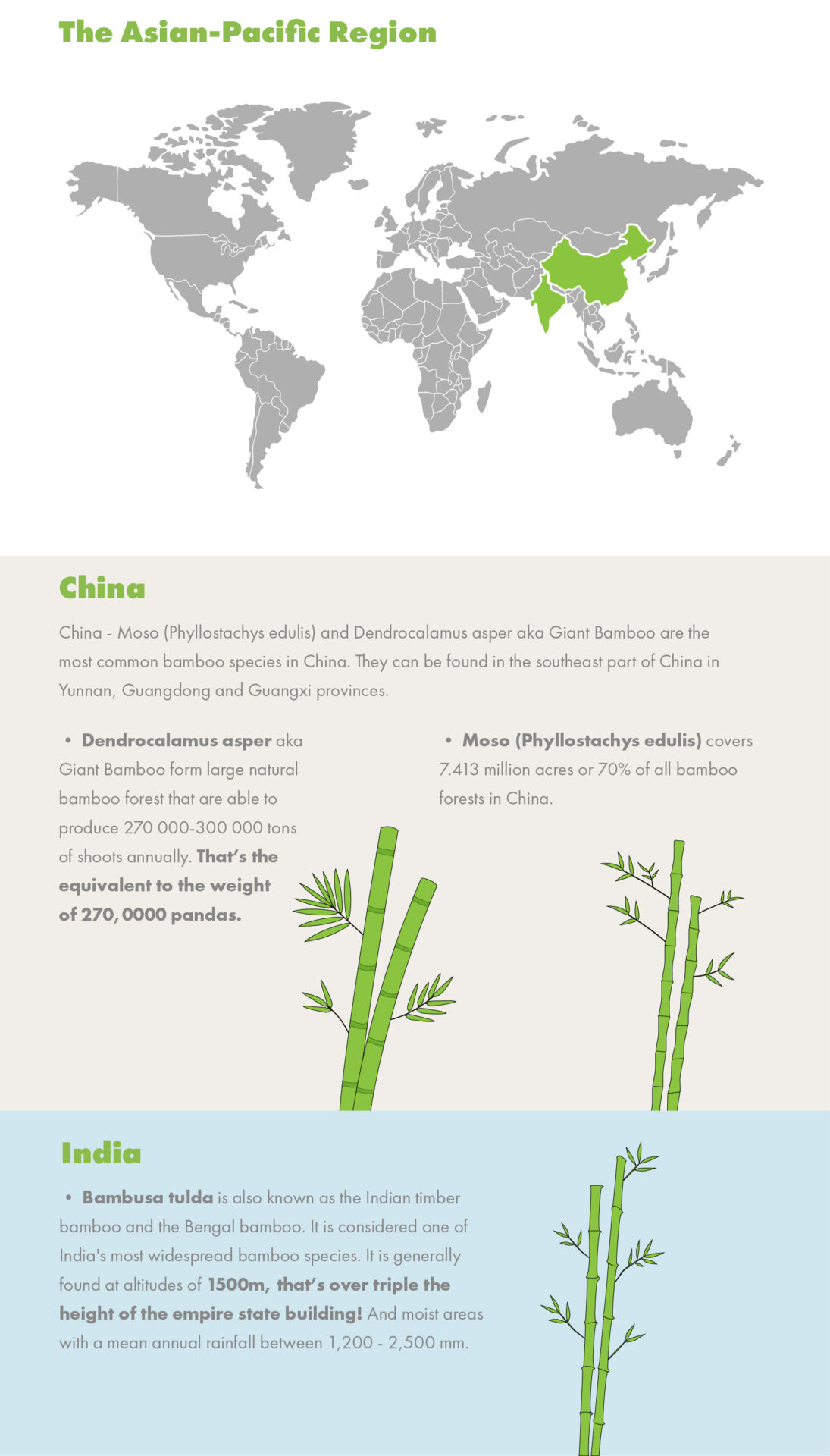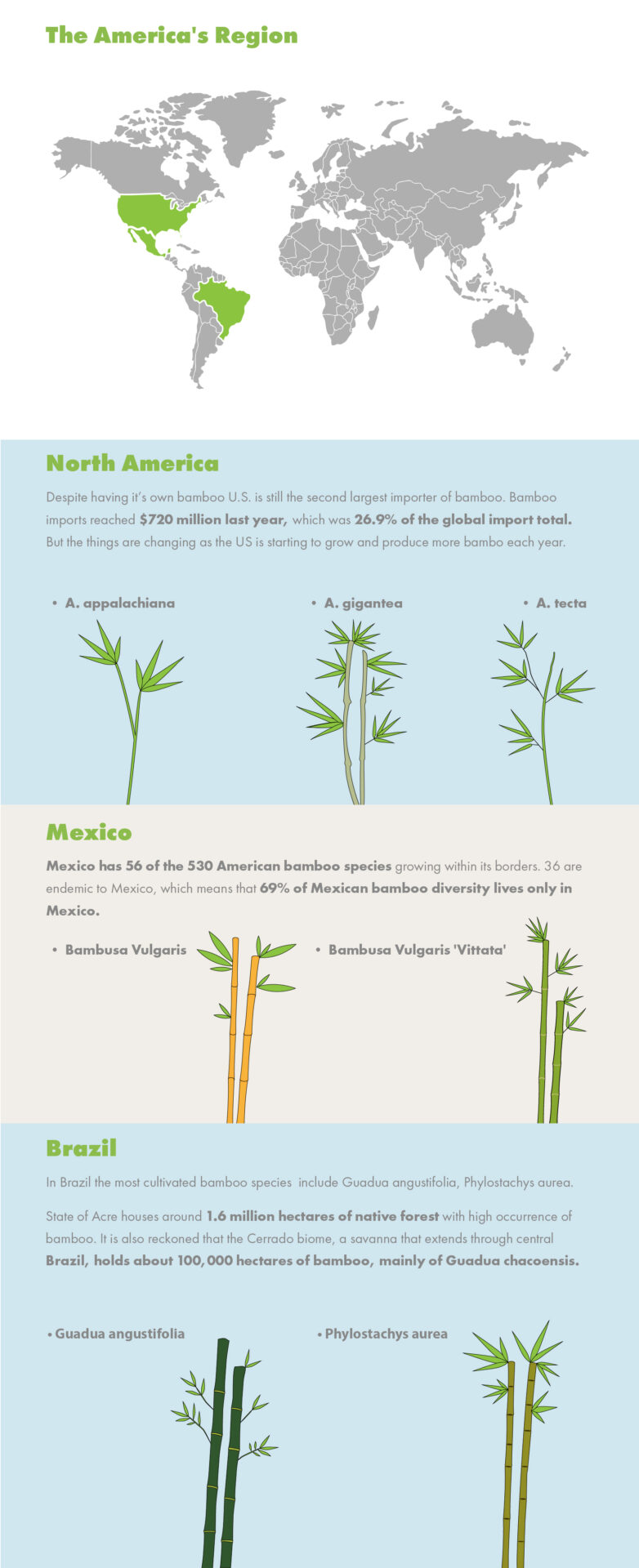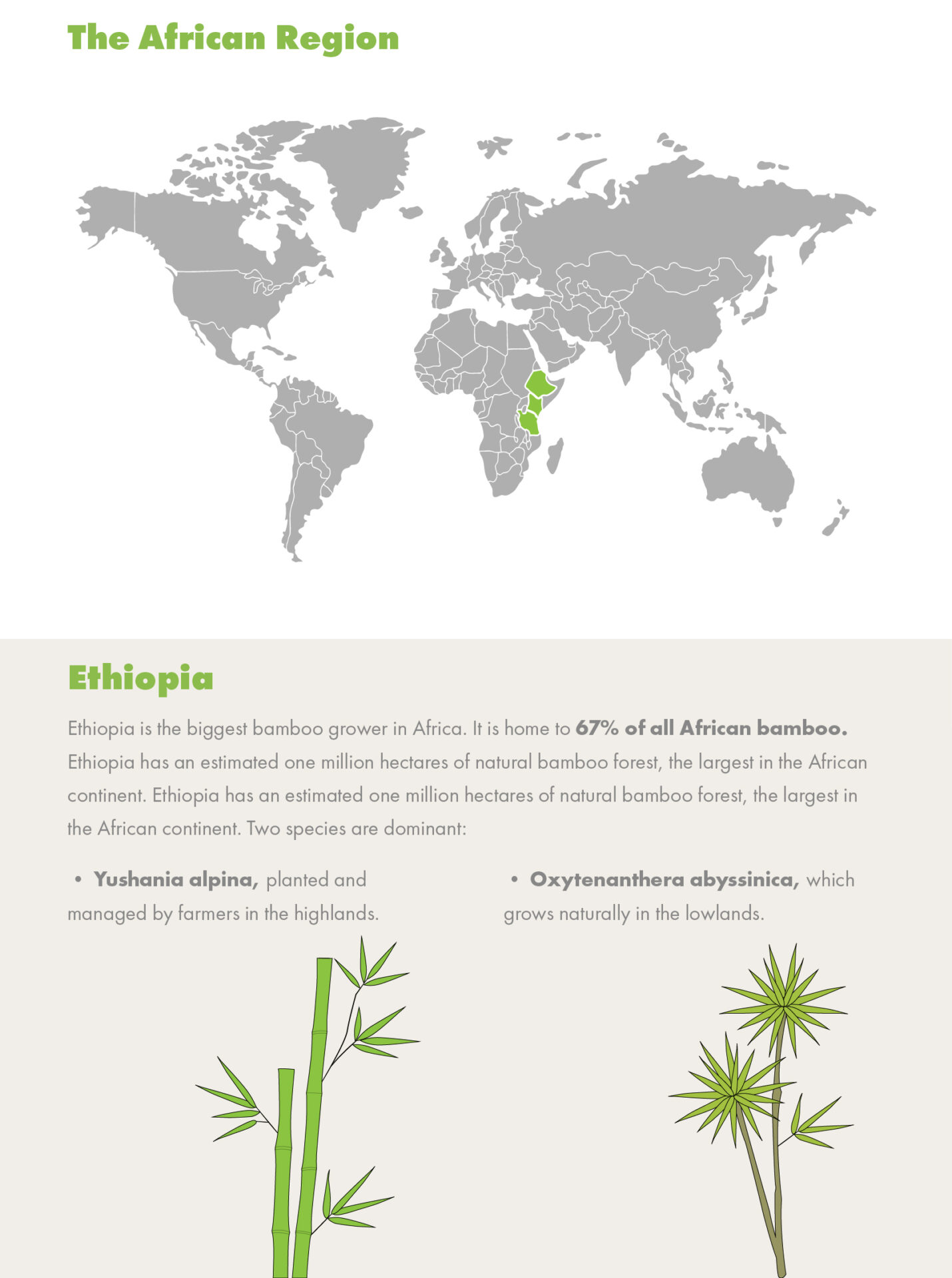Bamboo Around the World: Where Bamboo Grows
Last updated on August 15th, 2023 at 03:35 pm
Bamboo is a remarkable plant known for its versatility, strength, and sustainability. It is widely recognised for its use in various industries: construction, furniture, textiles, and even as a food source. But where does bamboo grow? This wonder plant is a global presence, distributed across various continents, and it plays a significant role in sustainable development across the world.
Bamboo Species and Distribution
There are over 1,500 species of bamboo spread across the world, making it one of the most widely distributed plants on Earth. Bamboo can be found in some incredibly diverse climates, from tropical regions to high-altitude mountains, as well as in some temperate zones. Each species has its own unique characteristics and growth requirements, contributing to the variety of bamboo ecosystems around the world.

Bamboo in Asia
Asia is the continent most closely associated with bamboo, as it is home to the largest number of bamboo species. From the towering groves of Moso bamboo in China to the sprawling bamboo forests dotted across Japan, Korea, and other Southeast Asian countries, bamboo has played a significant role in the region’s culture and economy for centuries. Asian countries have long utilised bamboo for construction, handmade crafts, and as a sustainable source of timber and fibre.

Bamboo in the Americas
Although not as diverse in species as Asia, the Americas also have their fair share of bamboo habitats. The lush bamboo forests of Central and South America are known for species like Guadua and Chusquea. Meanwhile over in the USA, the Pacific Northwest and parts of the Southern states are home to their own native bamboo species such as Arundinaria. The versatility of bamboo has been embraced by indigenous communities in the Americas for centuries, with various traditional uses in crafts, housing, and even musical instruments.

Bamboo in Africa
Africa boasts a remarkable range of bamboo species across its diverse landscapes. From the towering bamboo thickets of Madagascar to the bamboo forests found in regions like Ethiopia and Nigeria, bamboo plays a vital role in African ecosystems and local communities. African countries are recognising the economic and environmental benefits of bamboo, and many have initiated bamboo planting and management programs to promote sustainable development.

Sustainable Bamboo Management and Conservation
The global significance of bamboo extends beyond its practical uses. Bamboo plays a crucial role in sustainable development, providing jobs for rural communities, as well as aiding with environmental conservation. Bamboo’s rapid growth and its innate ability to sequester carbon make it an effective tool in combatting climate change. Not only this, but bamboo forests also act as natural water filters, preserving soil quality, preventing erosion, and providing habitat for a wide range of wildlife. Sustainable bamboo management practices, such as bamboo reforestation and responsible harvesting, are essential for the preservation of valuable ecosystems across the globe.
Where Bamboo Grows
Bamboo’s global presence is a testament to its adaptability and resilience. From the towering giants of Asia to the intricately thin-stemmed species in the Americas and Africa, bamboo thrives in diverse climates across the world. As we recognise the importance of sustainable development and environmental conservation, bamboo emerges as a renewable resource with immense potential. Harnessing the power of bamboo for bedroom accessories is one way to really celebrate the incredible properties of this fantastic plant.


